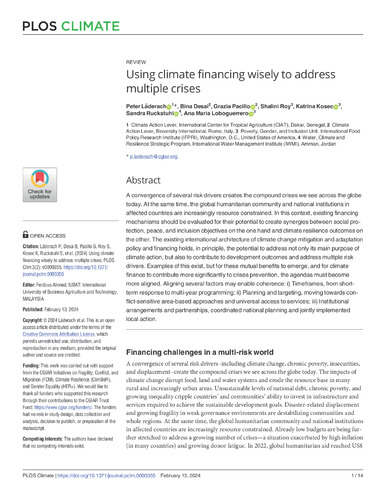Using climate financing wisely to address multiple crises
A convergence of several risk drivers creates the compound crises we see across the globe today. At the same time, the global humanitarian community and national institutions in affected countries are increasingly resource constrained. In this context, existing financing mechanisms should be evaluated for their potential to create synergies between social protection, peace, and inclusion objectives on the one hand and climate resilience outcomes on the other. The existing international architecture of climate change mitigation and adaptation policy and financing holds, in principle, the potential to address not only its main purpose of climate action, but also to contribute to development outcomes and address multiple risk drivers. Examples of this exist, but for these mutual benefits to emerge, and for climate finance to contribute more significantly to crises prevention, the agendas must become more aligned. Aligning several factors may enable coherence: i) Timeframes, from short-term response to multi-year programming; ii) Planning and targeting, moving towards conflict-sensitive area-based approaches and universal access to services; iii) Institutional arrangements and partnerships, coordinated national planning and jointly implemented local action.

